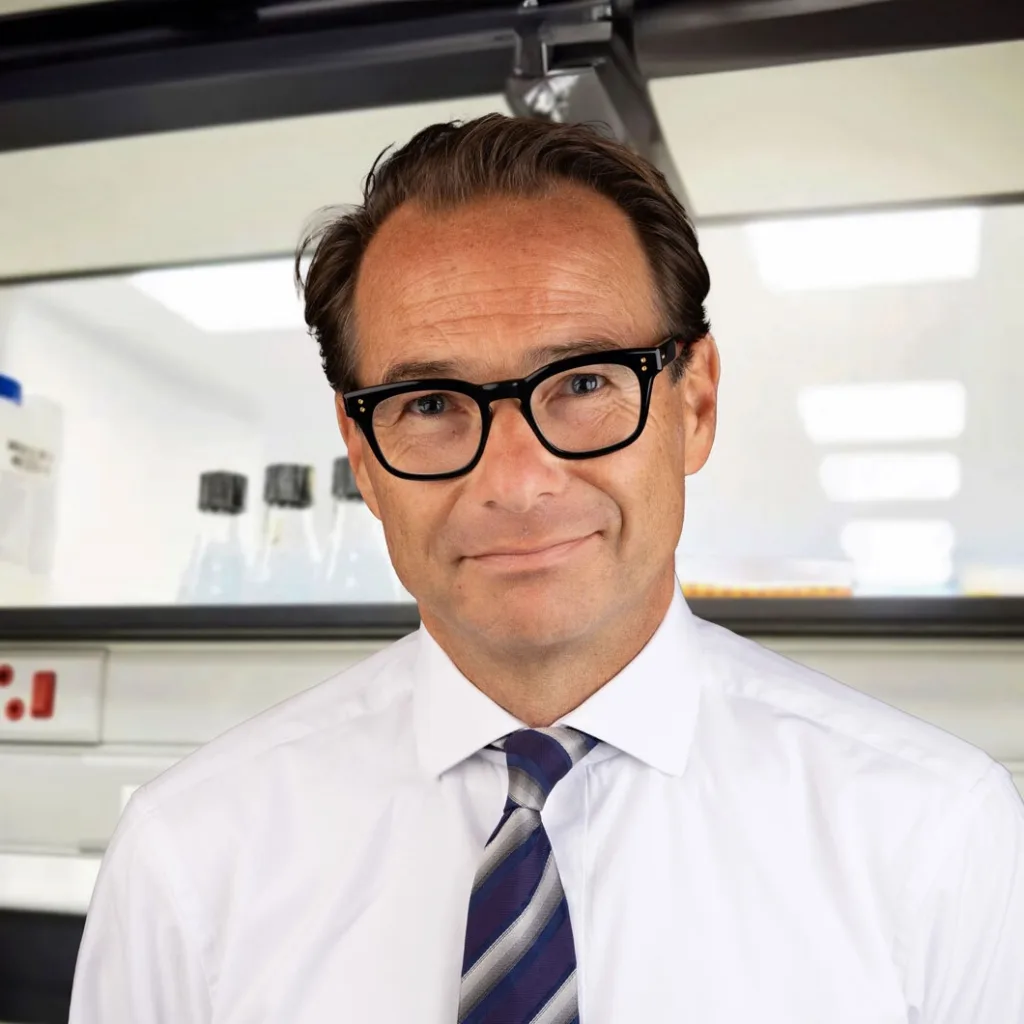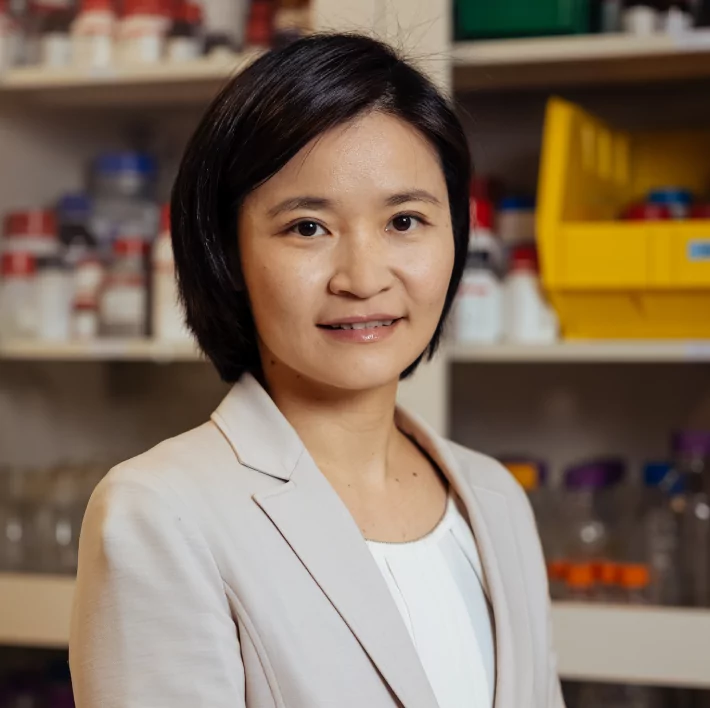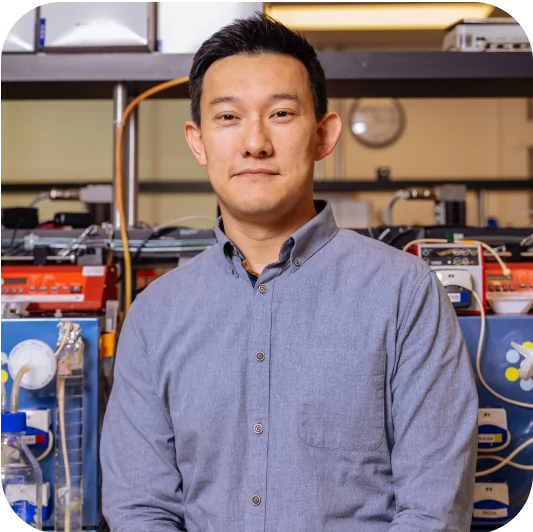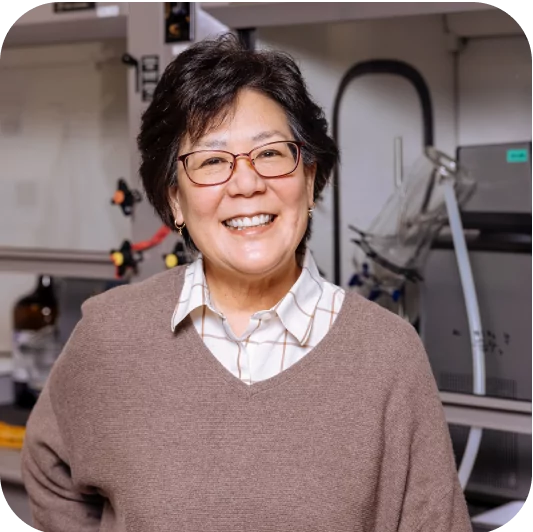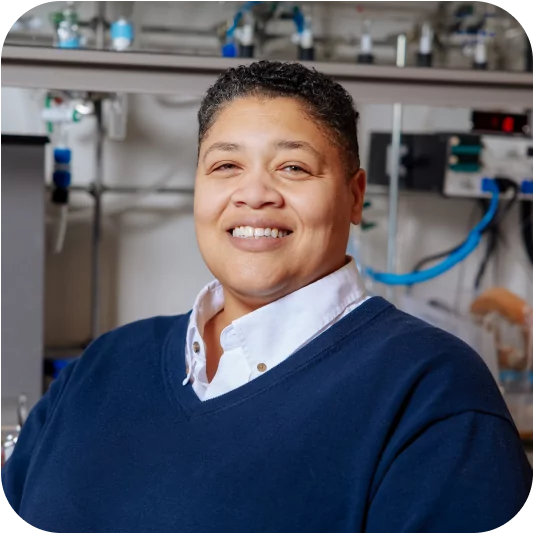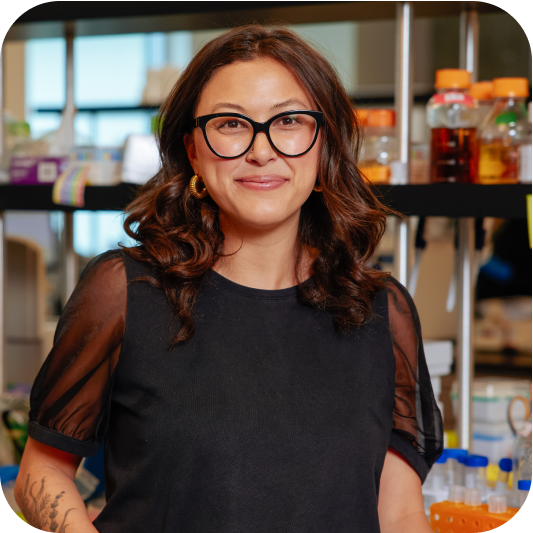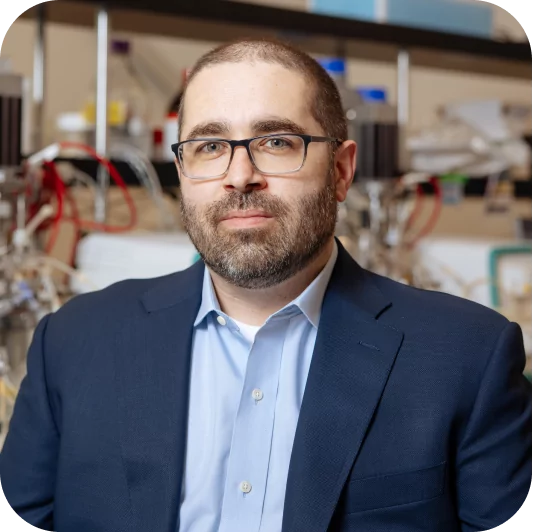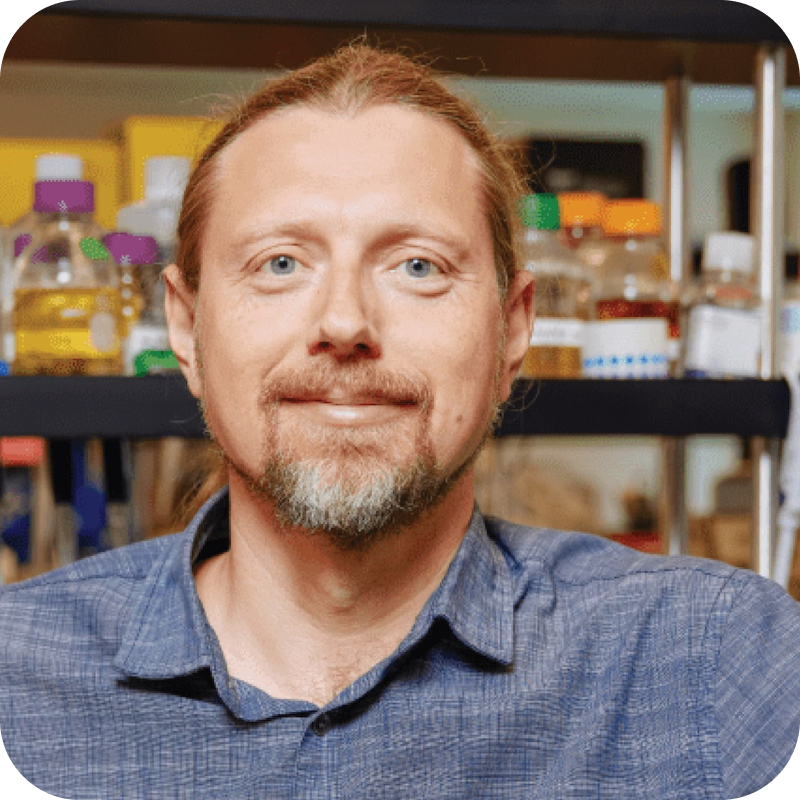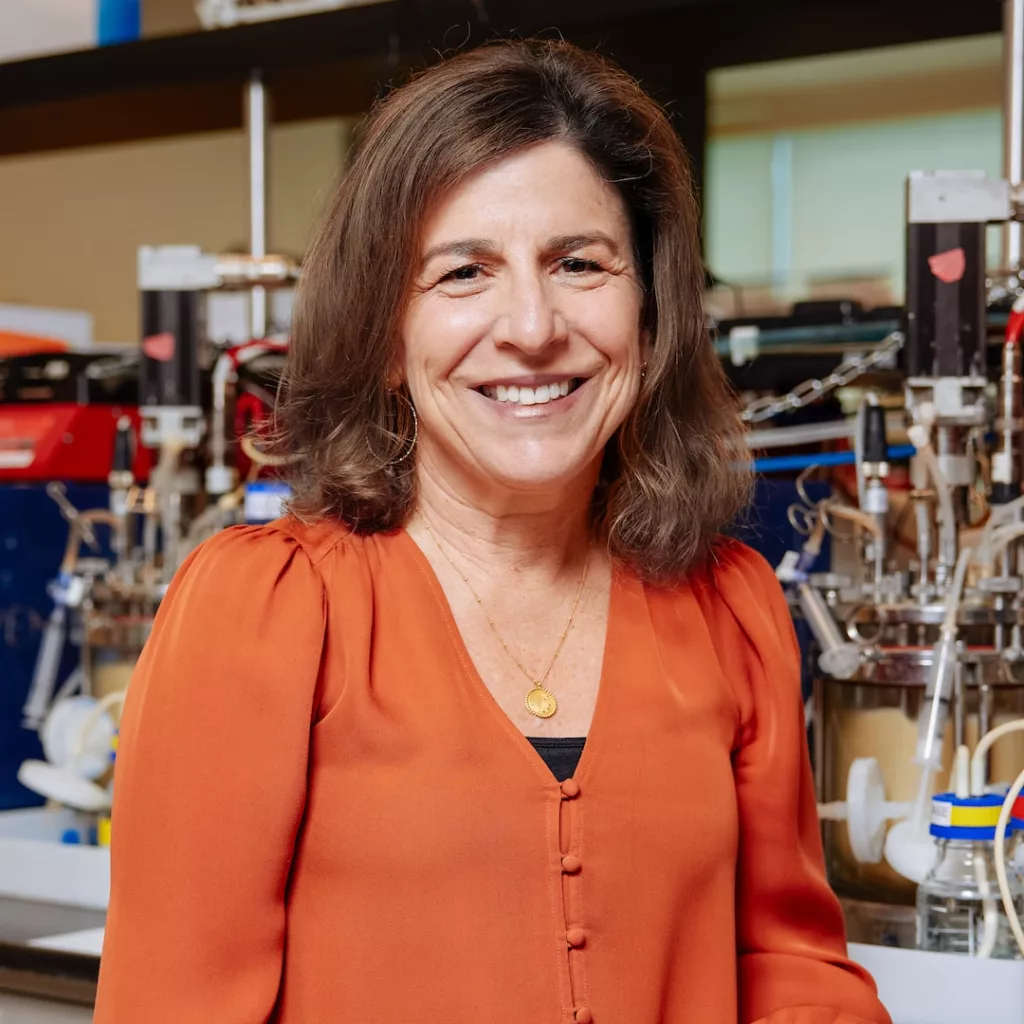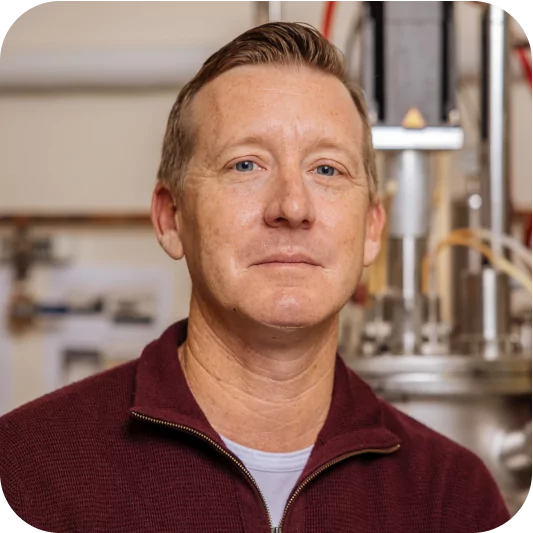We’ve recently welcomed Jesse Ahrendt, our new Senior Vice President of Quality Assurance and Regulatory Affairs, who will lead our quality and regulatory efforts. He brings 25 years of experience leading biotech, pharma, and medical device quality systems and compliance, most recently hailing from Zymergen, where he worked with Antheia COO, Zack McGahey. We sat down to speak with him about his background and his vision for Antheia’s future:
Welcome! Tell us a bit about yourself?
I’ve had a varied career, and it’s taken me from small startups to global multinational pharma corporations. I started out studying biology but turned toward industry pretty quickly, taking on a job in a QA/QC laboratory testing environment. I found that I loved exploring the feedback loop between quality assurance and the development of actual products you’re trying to commercialize, and eventually, the impact on patient outcomes.
My first mentor taught me that the quality of a product is only as good as the data you create to support it, and I’ve carried that with me throughout my career. I haven’t always been in pharmaceuticals, but I have always worked in a regulated environment – I started with medical devices, and with the exception of a few stints in consumer care, I’ve been in pharma for the last 21 years.
Tell us how and why you came to Antheia?
I truly believe in the promise and expectations of the bioeconomy, and that Antheia has a central role to play in making it a reality. Today, Antheia has a clear path forward from a quality and regulatory perspective, which means I’ll be supporting the development of quality systems as part of our validation process and scale up, laying a foundation for our commercial product pipeline. This will require extensive collaboration across supply chain, business development, and R&D, from biology to fermentation to downstream purification. It is very exciting.
You exude a lot of energy talking about quality systems – what sparks that excitement?
Oh, it’s a lot of fun! I’m a QA geek at heart, and it brings me a lot of personal joy. I’m sure a lot of people are familiar with Good Manufacturing Practice (GMP); in our case, GMP is really about how we must execute to bring all of the development work to fruition when it is transferred into a commercial manufacturing environment to ensure products have required levels of safety and efficacy. GMP has a lot of written rules, and it has even more unwritten rules that require an extensive amount of time in the industry to learn and truly understand. All of my corporate and consulting experience has helped me hone an understanding of how to navigate those unwritten rules.
I love puzzles, and this work is just that; taking what I know about how the picture has to look, and creating the right puzzle pieces to make the picture look the way it needs to for the company to be successful. This process looks somewhat different for every company and as a pharma company, the puzzle can be even more complex with the pieces being all different shapes and sizes – for me, solving that puzzle is a lot of fun. If I’d told my 22 year old self that, he’d laugh in my face and tell me it sounds boring. But after 25 years, it’s thrilling to me because the challenge is different every single time. And that makes it all worth it.
Quality assurance and regulatory approval is especially important in building industry confidence, but that confidence is not always a given – what do you think are the biggest misconceptions?
When I talk to my friends who are not in pharma, I find that sometimes they have a distorted view of pharma as being full of rather bad actors. But there are some great pharmaceutical companies that are navigating the regulatory landscape, staying nimble within the required quality and safety guidelines, and bringing life-changing therapies to the market. Discovery is accelerating, how we develop new products is evolving, and pharma companies, small and large, are creating opportunities lightyears beyond what we could have predicted – and wrote regulatory guidelines around – 25 years ago. Everyone is adapting to a constantly changing environment.
I think the established industry is also doing a good job of partnering with smaller companies to keep driving innovation. It’s common to see these massive pharma companies with tens of thousands of people and dozens of global factories, but they’re not necessarily always the ones driving the next-generation work. Smaller companies often have more flexibility to pursue major advancements, so you’ll often find the conglomerates partnering with or acquiring smaller teams to expedite drug discovery and innovation.
From the regulatory side, that landscape is incredibly advanced, despite the fact that it isn’t happening at the speeds we’d prefer. There is always a game of catchup, which is a result of rapid discovery and development milestones, and sometimes that gets a hefty dose of criticism. However, I look at the way that the FDA has partnered with manufacturers in the last couple of years to deal with drug shortages. Even though there are still problems, that partnership is much better than it was 25 years ago and I expect that we’ll continue to solve these challenges better and together over time.
Antheia’s core mission is to innovate and transform essential medicine supply chains – tell us more about how you see your role at Antheia in bolstering this mission, and more about the challenges ahead.
Supply chain issues aren’t going away any time soon, and that includes pharma. The question remains how we fix those issues, and keep supply chains moving?
The EO signed last fall underscored the urgency of boosting domestic biomanufacturing capabilities, calling for a coordinated biotech framework to drive innovation and protect consumers from supply chain failures. The sometimes fragile nature of a global supply chain has been a known issue for quite some time but the challenge of the past few years has really brought it to the forefront. I’m excited about being part of a company whose mission and work is specifically addressing this call to action. We’re leading the effort to use biomanufacturing to make pharma supply chains more reliable, cost effective, and localized. It’s a big, exciting opportunity, and we’re at the forefront of this evolution for the industry.
Where do you see Antheia’s positioning in the future?
I envision us as one of the most successful biomanufacturers for substitute agricultural-based KSMs and APIs. Once we have the systems and processes in place, it won’t take a lot to deploy facilities globally, especially considering our pipeline. There’s no shortage of products that we could apply our technology to and I could see us providing product solutions to a very eager global marketplace with manufacturing facilities engaged around the world.
